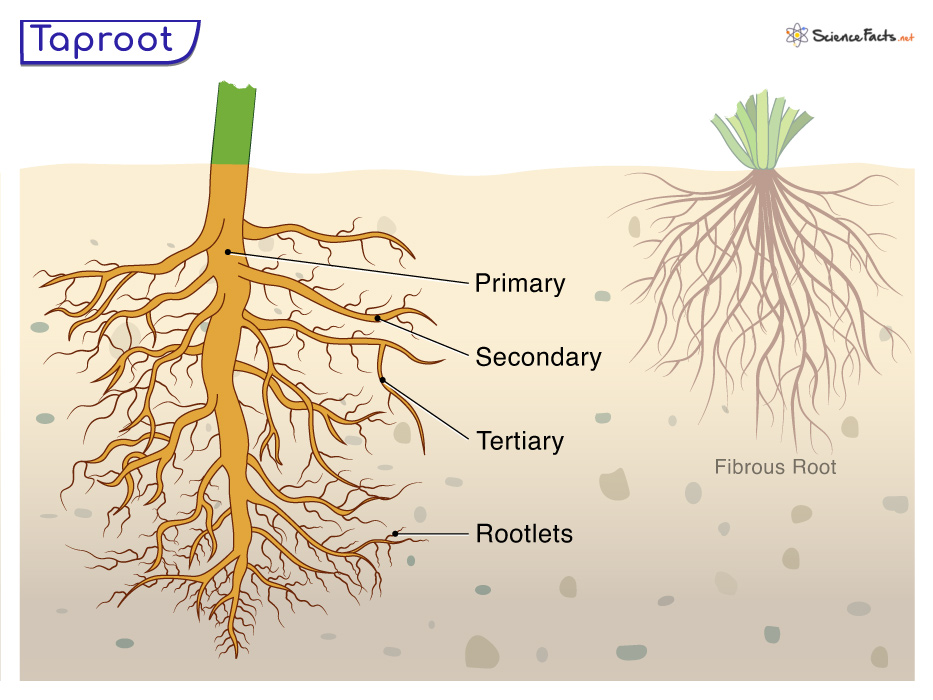Taproot
A taproot is the thick main root of a plant that grows vertically downward into the soil from which smaller lateral roots branch out. Taproots have a prominent central axis, unlike fibrous roots that are fine and branching. These roots are typically thicker and longer than lateral roots, helping the plant anchor firmly into the ground and penetrate deeply.
Roots of dicot plants have a taproot system. Carrots, radishes, beets, and parsnips are examples of dicot plants bearing a taproot. However, not all plants possess taproots. Some plants, like grasses, have fibrous roots.
Characteristics of Taproots
Taproots possess several distinct characteristics:
- They have a dominant central axis that extends directly downward.
- Smaller lateral roots branch out from it, creating a network-like pattern.
- They tend to be longer and thicker than fibrous roots, enabling them to reach deeper into the soil.
Development of Taproots
The development of taproots begins with seed germination. The initial root emerging from the seed is known as the radicle. The radical grows downward, giving rise to the primary root. As the primary root grows deeper into the soil, lateral roots develop.
The primary root continues to elongate and grow vertically downward, becoming thicker and longer. It serves as the central axis of the taproot system. Meanwhile, the lateral roots grow horizontally, branching out from the primary root.
In some plants, secondary roots develop from the taproot, which further divides into tertiary roots and rootlets.
Functions of Taproots
- Anchorage: It is the primary function of taproots, holding the plant firmly to its ground and thus preventing it from toppling over during wind or heavy rains.
- Water Absorption: It helps to access water from deeper soil layers, helping the plant to survive in arid environments or during periods of drought.
- Nutrient Absorption: It enables plants to absorb essential nutrients, such as nitrogen, phosphorus, and potassium, from deep within the soil required for plant growth and metabolism.
- ·Storage: Taproots of carrot, sugar beet, radish, beetroot, parsnip, and others are modified into storage organs. The stored food reserves are utilized during adverse conditions or for the plant’s growth and development.
Taproots and Plant Adaptations
Plants with taproots have evolved specific adaptations to suit their environment.
- Desert plants like cacti and acacia have well-developed taproots to access water deep underground, allowing them to survive in arid conditions.
- Certain biennial plants, such as carrots and beets, store food reserves in their taproots during the first year of growth. These reserves are used to produce flowers and seeds during the second year.
- Plants with extensive taproot systems, like trees, can help prevent soil erosion by firmly anchoring themselves into the ground.
Thus, taproots are a fascinating plant adaptation that provides the plants an added advantage to thrive better in diverse environments. Understanding their role and characteristics is also crucial for studying plant anatomy.
-
References
Article was last reviewed on Thursday, July 27, 2023




